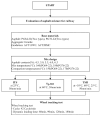Characterization of Asphalt Binder and Mixture for Enhanced Railway Applications
- PMID: 40731475
- PMCID: PMC12299974
- DOI: 10.3390/ma18143265
Characterization of Asphalt Binder and Mixture for Enhanced Railway Applications
Abstract
Although asphalt mixtures can be applied to railway tracks due to their viscoelastic properties, caution is required, as their ductility and brittleness are highly sensitive to temperature variations. In recent years, interest in the application of asphalt in railway infrastructure has increased, driven by the development of modified mixtures and the broader availability of performance-enhancing additives. Additionally, evaluation methods for railway tracks should be adapted to account for the distinct loading mechanisms involved, which differ from those of conventional roadways. In this study, the comprehensive properties of asphalt binders, mixtures, and testing methods-including physical and engineering characteristics-were assessed to improve the performance of asphalt concrete layers for potential applications in railroad infrastructure. The results of this study indicate that (1) the higher the performance grade (PG), the higher the indirect tensile strength (ITS) value achieved by the 13 mm mixture using PG76-22, which is higher than that of the PG64-22 mixture. This indicates that higher PG grades and modification contribute to improved tensile strength, beneficial for upper layers subjected to dynamic railroad loads. (2) The tensile strength ratio (TSR) increased from the unmodified mixture to over 92% in mixtures containing crumb rubber modifier (CRM) and styrenic thermoplastic elastomer (STE), demonstrating enhanced durability under freeze-thaw conditions. (3) Wheel tracking test results showed that modified mixtures exhibited more than twice the rutting resistance compared to PG64-22. The 13 mm aggregate mixtures also generally performed better than the 19 mm mixtures, indicating reduced permanent deformation under repeated loading. (4) It was concluded that asphalt is a suitable material for railroads, as its overall characteristics comply with standard specifications.
Keywords: crumb rubber modifier (CRM); indirect tensile strength (ITS); railway; rutting; styrenic thermoplastic elastomer (STE); tensile strength ratio (TSR).
Conflict of interest statement
The authors declare no conflict of interest.
Figures













Similar articles
-
Investigating the performance of asphalt pavements modified with reclaimed asphalt and crumb rubber.Sci Rep. 2025 Sep 1;15(1):32194. doi: 10.1038/s41598-025-17909-y. Sci Rep. 2025. PMID: 40890348 Free PMC article.
-
Sexual Harassment and Prevention Training.2024 Mar 29. In: StatPearls [Internet]. Treasure Island (FL): StatPearls Publishing; 2025 Jan–. 2024 Mar 29. In: StatPearls [Internet]. Treasure Island (FL): StatPearls Publishing; 2025 Jan–. PMID: 36508513 Free Books & Documents.
-
Systemic treatments for metastatic cutaneous melanoma.Cochrane Database Syst Rev. 2018 Feb 6;2(2):CD011123. doi: 10.1002/14651858.CD011123.pub2. Cochrane Database Syst Rev. 2018. PMID: 29405038 Free PMC article.
-
Comparison of Two Modern Survival Prediction Tools, SORG-MLA and METSSS, in Patients With Symptomatic Long-bone Metastases Who Underwent Local Treatment With Surgery Followed by Radiotherapy and With Radiotherapy Alone.Clin Orthop Relat Res. 2024 Dec 1;482(12):2193-2208. doi: 10.1097/CORR.0000000000003185. Epub 2024 Jul 23. Clin Orthop Relat Res. 2024. PMID: 39051924
-
The Black Book of Psychotropic Dosing and Monitoring.Psychopharmacol Bull. 2024 Jul 8;54(3):8-59. Psychopharmacol Bull. 2024. PMID: 38993656 Free PMC article. Review.
References
-
- Yang E., Wang K.C., Qiu Y., Luo Q. Asphalt concrete for high-speed railway infrastructure and performance comparisons. J. Mater. Civ. Eng. 2016;28:04015202. doi: 10.1061/(ASCE)MT.1943-5533.0001495. - DOI
-
- Huang Y.H., Lin C., Deng X. Hot mix asphalt for railroad trackbeds-structural analysis and design. Assoc. Asph. Paving Technol. Proc. 1984;53:475–494.
-
- Liu H., Duan G., Wang F., Zhang J., Zhou Y., Feng Y., Zhang K. Investigation on mechanical behaviors of Self-compacting concrete containing reclaimed asphalt pavement. Constr. Build. Mater. 2022;346:128421. doi: 10.1016/j.conbuildmat.2022.128421. - DOI
-
- Nanjegowda V.H., Biligiri K.P. Utilization of high contents of recycled tire crumb rubber in developing a modified-asphalt-rubber binder for road applications. Resour. Conserv. Recycl. 2023;192:106909. doi: 10.1016/j.resconrec.2023.106909. - DOI
LinkOut - more resources
Full Text Sources
Research Materials

